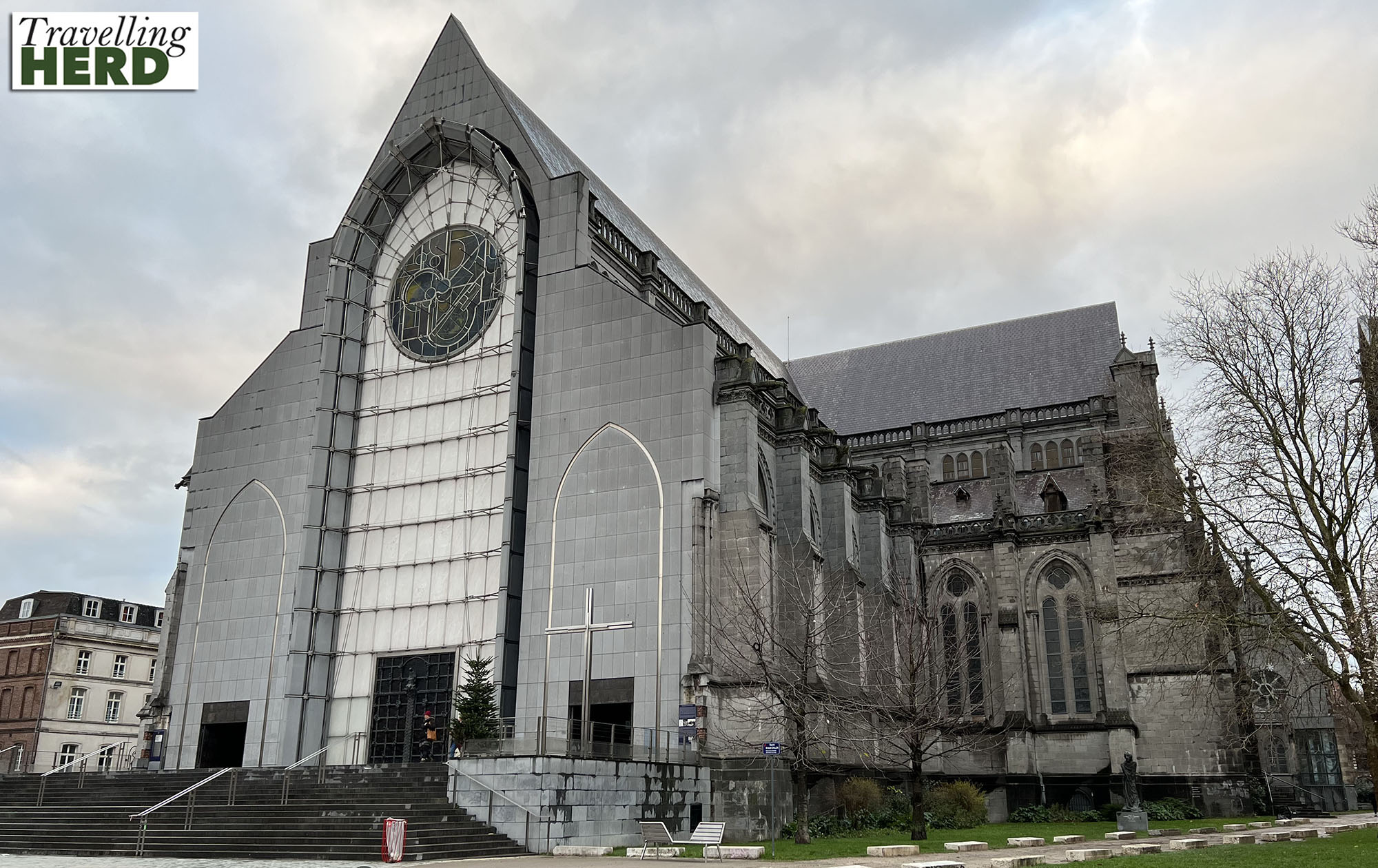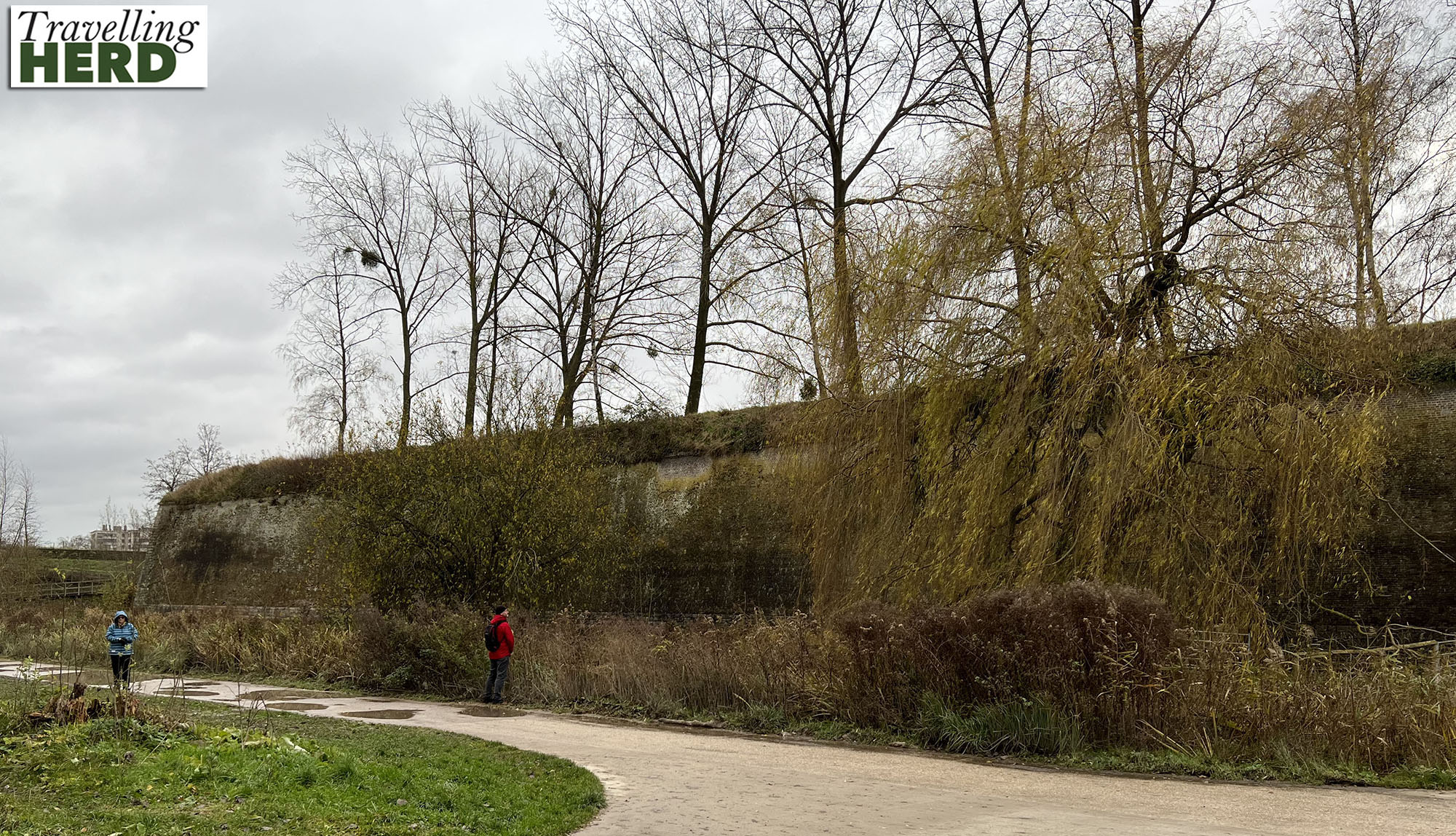Wednesday 1st and Thursday 2nd December 2021
Although some believe it it be the most important meal of the day, Martin eschews breakfast so while Liz and Martin went to visit the local chocolate museum on empty stomachs, we strolled to the highly recommended That’s Toast. This justifiably famous café provided us with a delicious start to the day in pleasant surroundings served by courteous and friendly staff: it is well worth a visit and we will certainly be returning next time we are in Lille for the Rugby World Cup in 2023.

Lille was actually Flemish prior to its invasion by Louis XIV in 1667 and many of the historic buildings are testament to this. Later, walking through the city with Liz and Martin, we passed the Opéra de Lille – a fine neoclassical building completed in 1913. Nearby, the belfry of the Neo-Flemish Chamber of Commerce [or Nouvelle Bourse] rises a commanding 76 meters above the city.

La Vieille Bourse, or Lille’s old stock exchange is said to be the finest building in the city, dating from the mid-17th century and it consists of 24 Flemish renaissance houses, all around a central arcaded courtyard.
Over 350 years later people come to play chess in the courtyard, and beneath the arcades there’s a daily flower and book market. When we visited, however, browsing was rather impeded by the rain.

Lille Cathedral, or the Basilica of Notre Dame de la Treille is an extraordinary juxtaposition of classical and modern architectural styles and home to the sculpture of the same name.

An international competition to design the building elicited 41 entries and the first two prizes were originally awarded to English architects. However, there were some French objections to commissioning foreign, Anglican, architects to build a Catholic cathedral and the commission was eventually awarded to local Lille architect, Charles Leroy. We couldn’t possibly comment.
Construction began in 1854. There were various obstacles, not least of which was the raising of sufficient funds to pay for construction and work was completed in stages under several generations of architects between 1856 and 1975. Part of the initial design was eventually abandoned and the building was finally completed in 1999 with a striking modern facade [see above].
Because construction has taken a century and a half and has been completed in stages, the interior mixes gothic inspired arches with almost brutal concrete but it is nevertheless an impressive piece of public architecture.

La Grand’ Place or Place du Général du Gaulle is taken over by the Christmas Market at this time of year.
Having strolled through the town to get our bearings, we went in search of food. . .

. . . which we found at the Chez Raoul Estaminet.

The following morning brunch at Emilie and the Cool Kids set us up for more sight-seeing.

A war memorial commemorates the sacrifice of the residents of Lille who died in the First and Second World Wars, and an inscription celebrates the First Polish Armoured Division which liberated the city on 5 September 1944. The memorial is next to the remains of the Palais Rihour, begun in 1453 by Philippe Le Bon, Duke of Normandy. You can walk up to the surprisingly light and airy Conclave Chamber [below, right]. The building also houses, on a lower level, the Tourist Information office.

After conquering Lille in 1667 Louis XIV set to to reinforce the city’s fortifications by building a star-shaped citadel in just three years using three million stone blocks, 70,000 lumps of sandstone and 60 million bricks.
The Citadel is still a French military base today, so entry is prohibited but you can walk around the outer walls, a route which is popular with joggers.

We passed the Maison Natale Charles de Gaulle on Rue Pincesse, to the north of Old Lille. This is where Charles de Gaulle was born on November 22 1890. The house belonged to his maternal grandparents and his family was clearly wealthy although it had lost its land in the French Revolution almost a century before.

We also popped in to the Eglise Saint-Michel and on to . . .

. . . the Town Hall which boasts an impressive Art Deco belfry, not to be confused with the one adorning the Chamber of Commerce. Indeed the Beffroi de l’hôtel de ville de Lille is 104 meters high and the tallest municipal building in France but we did not have time to take in the views from the top on this visit. That will be something to look forward to.

Nearby is the Porte de Paris, a triumphal arch built in the 17th century to commemorate Louis XVI’s capture of the city.

The collection in the Palais des Beaux-Arts in the Place de la République was one of the first to be established at Napoleon I’s instructions to house the artefacts seized from occupied territories. The collection is now housed in a splendid Belle Époque summer palace built at the end of the 19th century.

Across the fountains in the Place de la République you can see the imposing Prefecture building.

The Salon de Thé Meert is a fine historic tearoom near the heart of the city. The surroundings are beautiful but the vast selection available from the on-line menu made deciding what to order quite a challenge.

Three of us enjoyed the ambience and sampled the house speciality of waffles filled with vanilla cream.

However, hot beverages in sumptuous surroundings is not everyone’s cup of tea and Martin visited the Palais des Beaux-Arts instead.
From here it was time to reclaim our luggage and catch the Eurostar home. Despite changing regulations it was good to be travelling again.

Selfie of the day:






